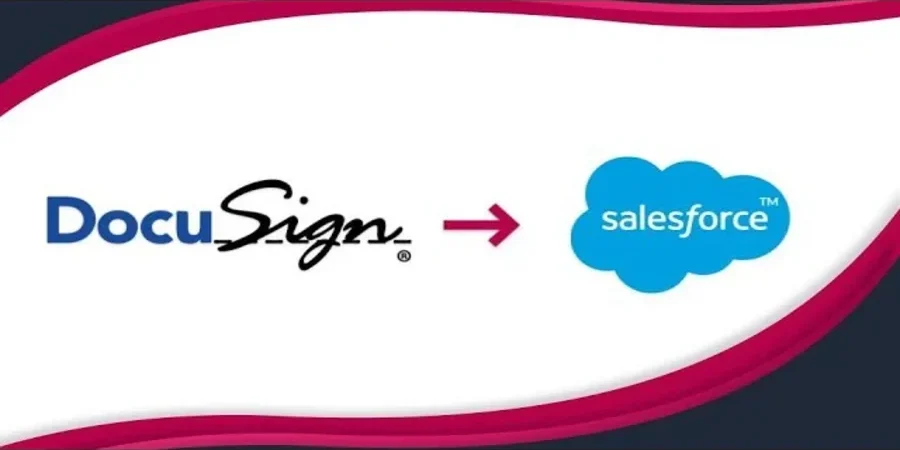Hey there. I’m Fernando, I’m here to chat about some cool tools that can make your Salesforce experience even better. You’re probably wondering what’s up with Conga and DocuSign, right? Well, buckle up because we’re about to dive into the world of document magic! Let’s break it down together and see how these tools can add some serious features to your organization.
Two such indispensable tools in the realm of document management and automation are Conga and DocuSign. Today, I’ll be sharing with you some insights into these powerful solutions, discussing their features, benefits, and potential disadvantages, based on my experiences.
Conga: Streamlining Document Generation and Workflow
Conga is a suite of applications designed to streamline document generation, reporting, and contract management within Salesforce. As a Salesforce Developer/Consultant, integrating Conga into Salesforce environments has consistently proven to be a game-changer for optimizing business processes. Here are some key highlights:
● Document Generation: Conga Composer, the flagship product of the Conga suite. It empowers users to effortlessly create documents, such as proposals, contracts, and reports, directly from Salesforce data. Its intuitive interface allows for the customization of templates, enabling personalized and professional-looking documents tailored to specific client needs.
● Workflow Automation: Conga Workflow enables the automation of repetitive tasks associated with document generation and management. From automating approval processes to scheduling document deliveries, Conga Workflow enhances efficiency and ensures consistency in business operations.
● Integration Capabilities: Conga seamlessly integrates with various Salesforce modules and third-party applications, offering a cohesive ecosystem for end-to-end document management. Whether it’s pulling data from Salesforce objects or integrating with external systems, Conga facilitates a unified user experience.
Benefits of Conga:
- Efficiency: Conga accelerates document creation and workflow processes, saving valuable time and resources.
- Personalization: Its template customization features allow for the creation of tailored documents, enhancing client interactions.
- Automation: Conga automates repetitive tasks, reducing manual errors and improving overall productivity.
- Scalability: It scales with business growth, catering to the evolving needs of organizations.
Disadvantages of Conga:
- Complexity: Configuring Conga solutions may require advanced technical expertise, posing challenges for less experienced users.
- Cost: While Conga offers substantial value, its pricing structure may be prohibitive for smaller businesses or startups.
- Learning Curve: Adopting Conga necessitates time and effort for training, especially for teams unfamiliar with the platform.
Streamlining Sales Proposals with Conga Composer
Scenario:
SivarForce needs to generate consistent, error-free sales proposals quickly.
Solution:
Integrate Conga Composer with Salesforce to automate proposal creation using customizable templates.
Steps:
1. Create a template in Conga Composer.
2. Automatically pull Salesforce data into the template.
3. Use Conga Workflow to automate proposal generation and approval.
Benefits:
Efficient, consistent proposals produced in minutes, scalable with business growth.
DocuSign: Transforming E-Signature Processes
DocuSign revolutionizes the way organizations manage agreements and contracts by facilitating secure and legally binding electronic signatures. As a Salesforce Developer/Consultant, integrating DocuSign with Salesforce has significantly streamlined the contract management lifecycle for my clients. Here’s what sets DocuSign apart:
● E-Signature Capabilities: DocuSign enables users to electronically sign documents from any device, eliminating the need for physical signatures and paper-based processes. Its robust authentication and encryption measures ensure document security and compliance with regulatory standards.
● Workflow Automation: DocuSign’s integration with Salesforce automates the entire signature process, from document preparation to recipient tracking. Users can easily send, track, and manage documents directly within Salesforce, enhancing collaboration and visibility.
● Comprehensive Insights: DocuSign provides real-time visibility into document status and signer activities, empowering users to track progress and identify potential bottlenecks. Its reporting and analytics features offer valuable insights for optimizing document workflows and improving efficiency.
Benefits of DocuSign:
Speed: DocuSign expedites the signature process, enabling faster deal closures and revenue realization.
Security: Its advanced encryption and authentication measures ensure the integrity and confidentiality of signed documents.
Compliance: DocuSign adheres to stringent regulatory requirements, providing a legally binding solution for electronic signatures.
Visibility: Users gain real-time visibility into document status and signer activities, enhancing transparency and accountability.
Disadvantages of DocuSign:
Cost: While DocuSign offers significant value, its subscription-based pricing model may be cost-prohibitive for smaller businesses with limited budgets. Integration Complexity: Integrating DocuSign with Salesforce may require technical expertise and configuration, particularly for complex workflows or customizations.
Dependency on Internet Connectivity: As an online platform, DocuSign relies on internet connectivity, which may pose challenges in areas with unstable or limited internet access.
Accelerating Contract Approvals with DocuSign
Scenario:
SivarForce wants to expedite contract approvals and eliminate manual signatures.
Solution:
Integrate DocuSign with Salesforce for digital contract signing.
Steps:
1. Generate contracts automatically in Salesforce.
2. Send for e-signature via DocuSign.
3. Track and update status in real-time within Salesforce.
Benefits:
Faster deal closures, secure and compliant signatures, and real-time visibility into contract status.
In conclusion, both Conga and DocuSign serve as invaluable tools for Salesforce Developers/Consultants seeking to enhance document management and automation capabilities within Salesforce environments. While each solution offers distinct features and benefits, it’s essential to carefully evaluate their suitability based on specific business requirements, budget constraints, and technical considerations. By leveraging the strengths of Conga and DocuSign, organizations can streamline workflows, improve productivity, and ultimately drive business success in the digital age.
Fernando Hernandez
I'm a passionate Salesforce consultant and developer with over 3 years of experience in the technology industry. My love for technology is evident in my continuous quest for knowledge and my desire to share it with others.

